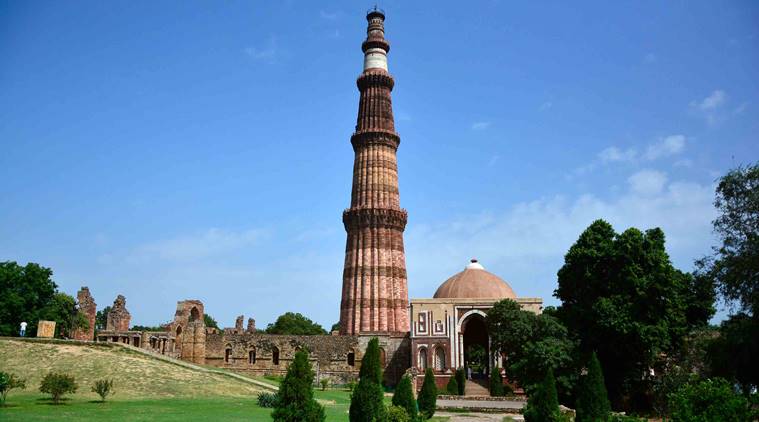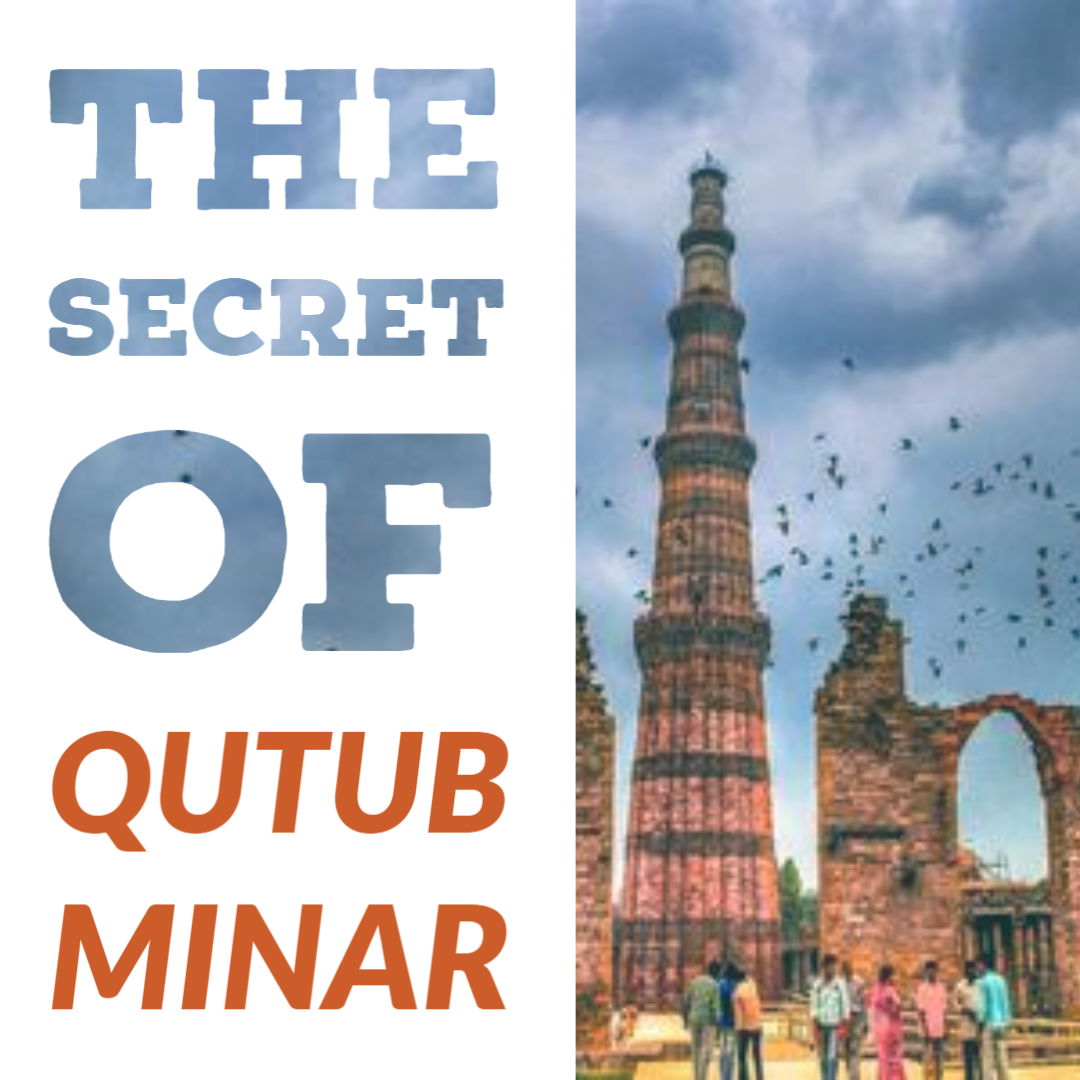
Qutub Minar is a minaret and “victory tower” that forms part of the Qutb complex, a UNESCO World Heritage Site in the Mehrauli area of New Delhi, India. The height of Qutb Minar is 72.5 meters, making it the tallest minaret in the world built of bricks. It contains a spiral staircase of 379 steps.
The Story Behind Qutub Minar

Built as a symbol of victory for Muslim invaders over the Hindu land, Qutub Minar served as a victory tower when Muhammad Ghori took over the Rajput king, Prithviraj Chauhan, in 1192. Later Ghori’s viceroy, Qutb-ud-din Aibak, who went on to become the first ruler of the Mamluk dynasty began the construction of Qutub Minar. The minar has endured the forces of nature and time. It is said to be struck by lightning in 1368, which damaged its top storey, which was later replaced by the existing two floors by Firoz Shah Tughlaq. Then in 1803, an earthquake jolted the minaret and the then major in the British Indian Army, Robert Smith renovated the tower in 1828 and even installed a cupola over the fifth floor which added another storey to the tower. But in 1848 then Governor General of India, Viscount Hardinge instructed to take down the cupola and place it at the ground level to the east of Qutub Minar where it exists even today and known as Smith’s Folly. This is one of the reasons why the structure has a varied architectural facade ranging from the time of Aibak to that of the Tughlaq dynasty.
Qutub Minar has taken architectural and design influences from Minaret of Jam in Afghanistan. The lotus borders carvings, garlands and looped bells were incorporated from the local sensibilities. The tower has five tapering storeys superposing with a spiralling staircase of 379 steps. The lower three storeys consist of cylindrical hilts of red sandstone, separated by rims and balconies, with Muqarna truss. The fourth column is made of marble and the fifth is built of marble and sandstone with engravings of Quranic texts and decorative motifs. There are inscriptions in Nagari and Parso-Arabic characters on the walls of Qutub Minar which document its construction and reconstructions by Tughluq and Sikandar Lodi between 1381-1517.
The minar is said to be tilting about 65 cm from the vertical but is considered safe with the experts wanting constant monitoring so that the rainwater seepage doesn’t affect its base. Back in the day and even today Qutub Minar stands as an inspiration for several towers and minarets built after it.
Facts:
- It is the tallest minaret building in the world.
The height of Qutub Minar is 72.5 metres. There are 379 stairs inside the tower, which lead to the top. The diameter of Qutub Minar is 14.32 metres at the base and 2.75 metres at the top.
- It is surrounded by historical monuments.
The Qutub Minar is surrounded by several great historical monuments and all of them together are referred to as “Qutb Complex”. The complex includes: Iron Pillar of Delhi, Quwwat-ul-Islam Mosque, Alai Darwaza, the Tomb of Iltutmish, Alai Minar, Ala-ud-din’s Madrasa and Tomb, the Tomb of Imam Zamin, Major Smith’s Cupola and Sanderson’s Sundial.
- Stampede
Before 1974, the general public was allowed to access the top of the minar. On December 4, 1981, 45 people were killed in a stampede that followed an electricity failure that plunged the tower’s staircase into darkness. Consequently, public access to the inside of the tower has been banned.
- The almost foray into Bollywood
Bollywood actor and director Dev Anand wanted to shoot the song ‘Dil Ka Bhanwar Kare Pukar’ but the cameras were too big to fit inside the tower’s narrow passage, and the song was shot inside a replica of the tower instead.
- Quwwat-ul-Islam Masjid
Just near Qutub Minar stands the first ever mosque to be built in India. The name of this mosque translates to “The Might of Islam Mosque” in English. This building symbolises the ascendance of one religious power over another. The original mosque was built on the foundations of a Hindu temple and the essence of it can be seen when you visit.
- Dreams too big to be true
Ala-ud-din Khilji aimed to build a second tower exactly like the Qutub Minar, but twice as high. At the time of his death, the tower had reached 27 metres and no one agreed to continue his overambitious project. Ala’i Minar, the incomplete tower, stands to the north of the Qutub Minar and the mosque.



Pingback: Top 10 Richest Temples In India | Top 10 | Top Notch | BTP